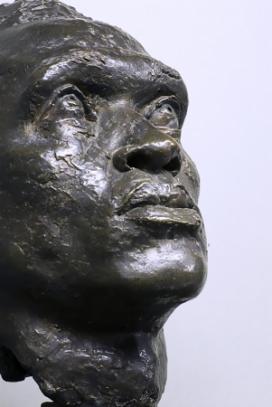In Greater Manchester
- How money from slavery made Greater Manchester
- The importance of cotton in north west England
- The Lancashire cotton famine
- Smoking, drinking and the British sweet tooth
- Black presence in Britain and north west England
- Resistance and campaigns for abolition
- The bicentenary of British abolition
Global

Bust of Paul Robeson
Legacies: stereotypes, racism and the civil rights movement
Slavery gave rise to increasingly entrenched racist perspectives. While it is unlikely that racism caused slavery itself, undoubtedly the growth of racism grew from the time of the transatlantic slave trade.
Racism is a belief that distinct human races exist and that one race is superior to another. This was used by Europeans to justify their enslavement of Africans. They maintained racist ideologies and tried to demonstrate that Africans were 'savage' and 'uncivilised' so they could justify treating them inhumanely.
There were probably few organised or institutionalised forms of racism before the 1900s. Many British people would have had limited experiences of interacting with black people. However, there are visual representations of black people dating back to the period of slavery. They tend to be stereotypical and derogatory representations, often cartoon caricatures. The physical features of black people are often exaggerated (to support the European ‘scientific’ definitions of race).
In general, representations of black people during the 1900s tend to show cheerful, happy and hardworking Africans, used mainly to promote colonial produce. Golliwogs, with their stereotypically crude features, were popular childhood toys. They were used as a marketing tool on Robertson's jams and marmalades from 1910 and were only dropped in 2001.
These various stereotypes have become so ingrained that they survived long after slavery and helped perpetuate racism and, in the USA, official segregation. Many of these stereotypes are still familiar today.
Notable black people who defied the stereotypes, such as the actor Paul Robeson, as well as many musicians and sports stars still encountered racism in their work and lives. The African American civil rights movement (1896-1968), with its well known figureheads such as Martin Luther King and Malcolm X, was a legacy of slavery and a powerful force finally bringing an end to racial segregation in America.